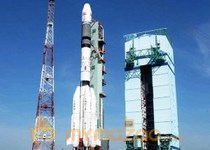India will launch five satellites by June, including one for advanced remote sensing and two for communications, say officials of the Indian Space Research Organisation (ISRO).
The first launch, scheduled for April 20, will be of Resourcesat-2, intended for study and management of natural resources and sending back pictures and other data, and two other satellites.
India has the largest constellation of remote sensing satellites in the world providing imagery in a variety of spatial resolutions from better than a metre ranging up to 500 metres, and is a major player in vending such data in the global market.
ISRO will then launch two communication satellites – GSAT-8 from French Guyana and GSAT-12 from India – by June this year. These will serve the needs of the telecommunication and television sectors.
An ISRO official, who did not want to be named, said GSAT-8 will augment the growing demand for communication transponders (automatic receivers and transmitters for communication and broadcast of signals).
With India in the process of developing a rocket that could carry a three-tonne satellite, GSAT-8 will be launched by Ariane rocket from French Guyana some time this May.
Following that will be the launch of GSAT-12 using the Polar Satellite Launch Vehicle (PSLV) from ISRO’s rocket port at Sriharikota in Andhra Pradesh, around 80 km from Chennai.
Weighing 1,425 kg, GSAT-12, with 12 extended C band transponders, is expected to be launched some time in June.
The satellite is expected to serve the Very Small Aperture Terminal (VSAT) sector, used to transmit data like point of sale transactions or to provide satellite internet access and others.
Though PSLV rockets are largely used by ISRO to launch remote sensing/earth observation satellites, it has also been used to put into orbit communication satellites in geo transfer orbit (GTO).
According to ISRO officials, the PSLV rocket that will carry GSAT-12 will weigh over 300 tonnes – heavier than the standard PSLV rocket that weigh around 290 tonnes at lift off.
The rocket will be powered with much longer strap-on motors containing more fuel.
ISRO is also mulling the launch of another remote sensing satellite, Megha-Tropiques in July, to study and understand the life cycle of convective systems and their role in the associated energy and moisture budget of the atmosphere in the tropical regions.
Pre-launch work is on at Sriharikota for the April 20 flight of the PSLV that will carry three satellites – the 1,200 kg Resourcesat-2 satellite, the 92 kg joint Indo-Russian nanosatellite Youthsat for stellar and atmospheric studies, and a 105 kg microsatellite X-sat for imaging applications, built by the Singapore-based Nanyang Technological University.
“Everything is progressing well and the launch will be at 10.12 a.m.,” S. Satish, ISRO’s director, Publications and Public Relations,said.
Resourcesat-2 was originally scheduled for launch in January this year but got postponed to February and then to April.
Not wanting to risk a failure, the Indian space agency decided to test a gas motor fitted in the second stage/engine, powered by liquid fuel, for high temperature tolerance levels after dismantling the fully assembled rocket.
This was the second time within an year that ISRO has dismantled a fully-assembled PSLV rocket to check out a component in the rocket’s second stage.
Last April, prior to the launch of Cartosat-2B satellite and a couple of other payloads, the rocket was dismantled to replace a faulty component.
The 44-metre tall PSLV is a four-stage (engine) rocket powered by solid and liquid propellants alternatively. The first and third stages are fired by solid propellant and the second and fourth stages are fired by liquid propellant.







